How to promote your products on social media (8 examples that deliver results)

Social media offers an excellent opportunity for creators to engage with audiences, promote their products, and drive sales.
But, with great opportunities come great challenges:
Navigating the world of social media marketing can be overwhelming, especially for those new to the game. Moreover, standing out in a sea of content and converting followers into customers requires a strategic, thoughtful approach.
That’s why we’ve put together this comprehensive guide with real examples to help you master the art of promoting your products on social media. So, if you’re a creator looking to maximize your social media presence—we’ve got you!
Know your followers & nail your brand persona
Before you dive into promoting, it’s crucial to understand your target audience:
Who are they? What are their interests, needs, and pain points? What social media platforms do they frequent?
By answering these questions, you can tailor your marketing efforts to resonate with your audience.
Each social media platform caters to different demographics and interests. For instance, TikTok is known for its younger audience, while LinkedIn caters to professionals.
Tailoring your content to fit the interests, needs, and communication styles of your target audience on each platform increases your chances of engagement and conversion.
Here’s a brief overview of marketing on major social media platforms:
- Instagram. Ideal for visual content (images and videos) accompanied by captions, and utilizing Reels and Stories for storytelling. Audience primarily comprises Gen Z and Millennials. The algorithm prioritizes hashtags, high engagement rates on posts, and the frequency of post saves and shares.
- Facebook. Effective for long-form text posts, establishing membership groups, and utilizing Reels and Stories for storytelling. Audience primarily includes Millennials and older demographics. The algorithm prioritizes post shares and page likes.
- X (formerly Twitter). Ideal for concise and timely updates, engaging in real-time conversations, and utilizing trending hashtags. Audience comprises a diverse range of demographics. The algorithm prioritizes retweets, likes, and replies.
- LinkedIn. Suited for professional networking, sharing industry insights, and posting thought leadership content. Audience primarily consists of professionals and businesses. The algorithm favors engagement with professional connections, content relevance, and post shares.
- TikTok. Perfect for entertaining and engaging short-form videos, utilizing trending songs and challenges. Audience predominantly includes Gen Z and younger Millennials. The algorithm prioritizes video views, likes, comments, and shares.
- YouTube. Ideal for producing high-quality video content, and utilizing keywords for search optimization. Audience varies widely across demographics. The algorithm prioritizes video watch time, engagement metrics (likes, comments, shares), and subscriber growth.
Another thing to consider is your brand personality.
Your brand’s persona on social media should be a reflection of your business values, tone, and style. This persona becomes the voice of your brand online and should resonate with your audience.
Your brand persona will guide how you create content, interact with followers, and even handle customer service inquiries on social platforms.
Content is king in the world of social media marketing
While posting regularly is important, the quality of your content is paramount. High-quality, engaging content that adds value to your audience’s lives is more likely to get shared, commented on, and remembered.
In the visually driven world of social media, eye-catching images and videos can make your product stand out.
So, be sure to invest in good photography and learn some basic photo and video editing skills that can dramatically increase the appeal of your posts (we recommend using a good quality smartphone or digital camera).
Platforms like Instagram and TikTok are particularly visual and offer great opportunities to showcase products in action.
In other words, capture your audience’s attention by putting yourself in their shoes.
For instance, photographer Linda Skuja (Eleven Handmade) shares stunning images of her textile designs through captivating carousel posts on Instagram, highlighting different angles and details of each piece.
This has helped her draw in a massive amount of loyal customers.
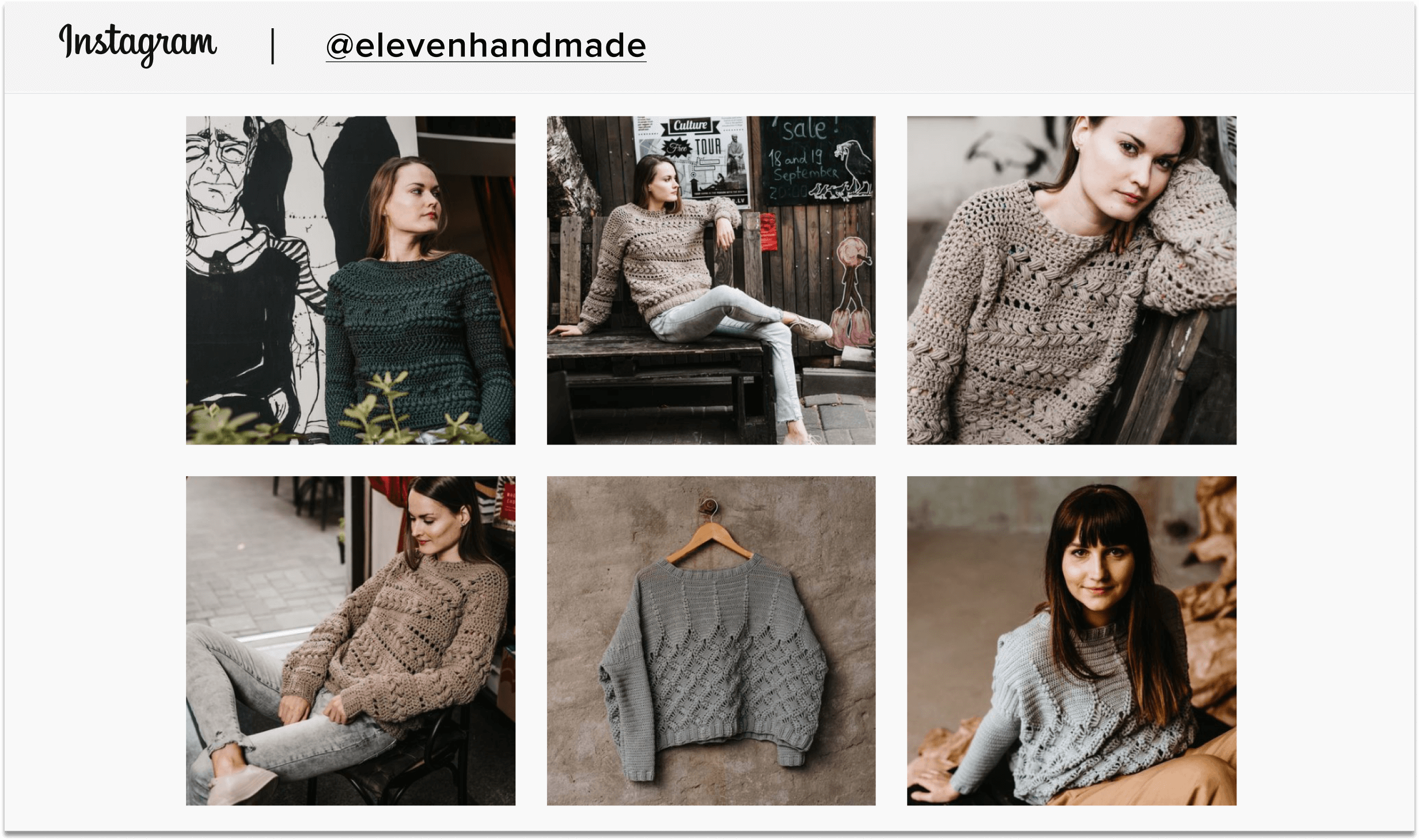
8 real examples of how to market your product on social media
Before we dive into strategies that work, keep in mind that authenticity is key to building trust and credibility with your audience. Try to avoid overly promotional content that feels salesy and instead focus on building genuine connections with your followers.
Remember, social media is not a one-way street. It’s a platform for dialogue.
Regardless of the platform you use, actively engaging with your audience (e.g. replying to comments, joining conversations, and asking for feedback) makes all the difference. This helps establish a relatable and trustworthy presence.
Now, having said that, let’s take a look at some of the most effective marketing tactics that have consistently yielded positive results for our sellers.
1. Trend riding on TikTok & Instagram to capture attention
If your audience is on TikTok, I have some good news for you:
Many Sellfy creators have achieved breakthroughs with TikTok’s algorithm, resulting in a substantial following. They all share one common strategy: leveraging the latest TikTok trends, including popular filters and songs.
Some of these trends can also be shared on Instagram, as the two platforms often adopt the same trends, with TikTok typically leading the way and Instagram following suit (a lot of TikTok videos get reposted on Instagram without the watermark).
It may sound almost too good to be true, but that’s the essence of it—using trending music or sounds on both platforms.
So, make sure you stay updated on the latest TikTok and Instagram trends or challenges to connect with a wider audience. The earlier you participate in a new trend, the greater the likelihood that people will discover your product (you can even use the trend to promote your business).
But, how do you discover the latest trends? It’s easy: TikTok typically promotes trending content on your For You Page (FYP). You don’t really need to take any action other than participating as early as possible.
Examples:
Emma Chieppor (Excel Dictionary) saw immense success by using popular songs and filters in her videos, attracting millions of views and driving traffic to her Sellfy store in less than a week.
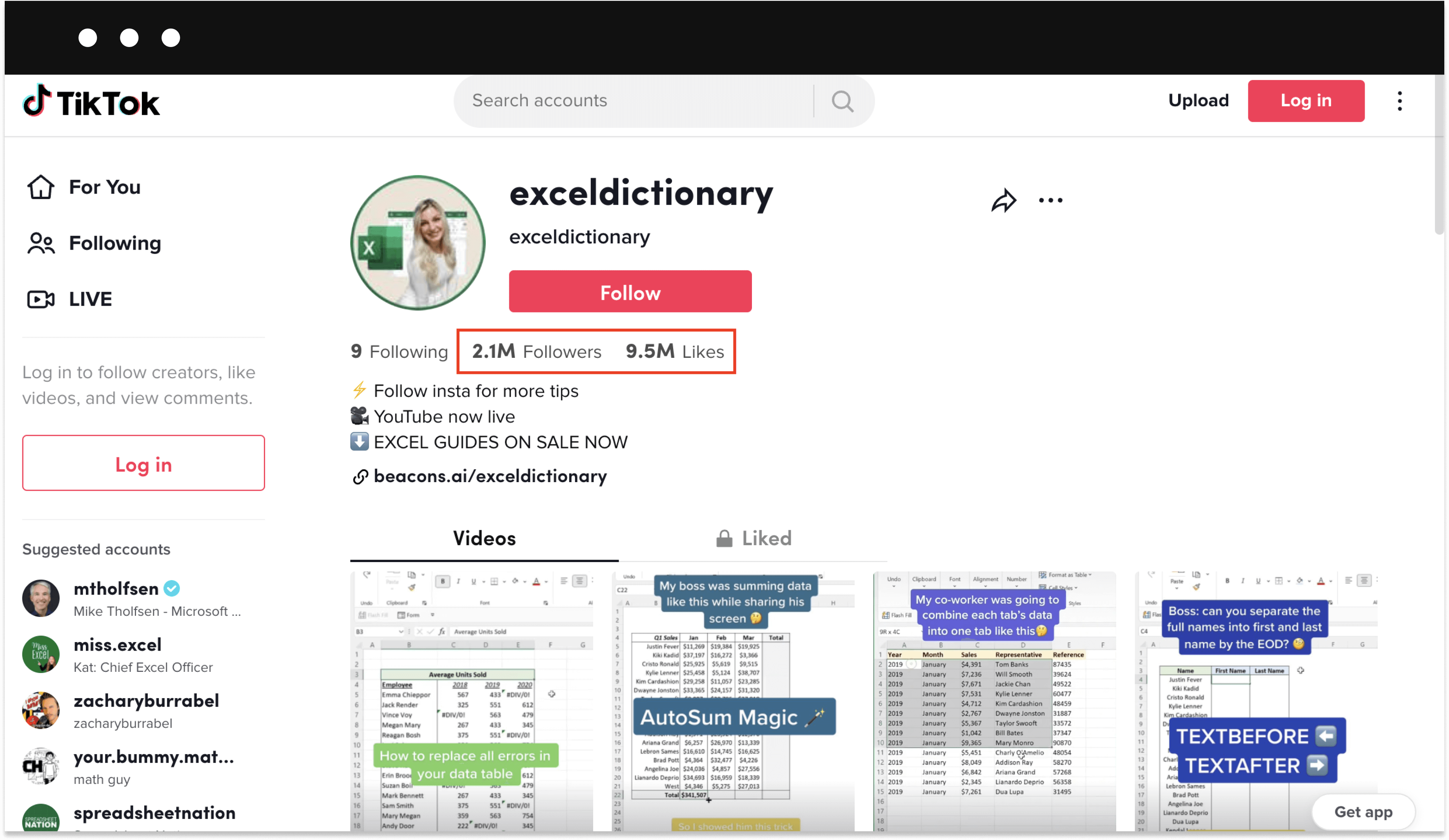
Emma attributes her success to staying up-to-date with trends:
I make sure to keep up with TikTok’s trends and popular songs. I believe it’s crucial to understand what people want to see and incorporate that into your videos.
Next, we have Ashley Renee (Messy Eats Store), a keto food blogger who gained popularity by sharing her delicious recipes on TikTok.
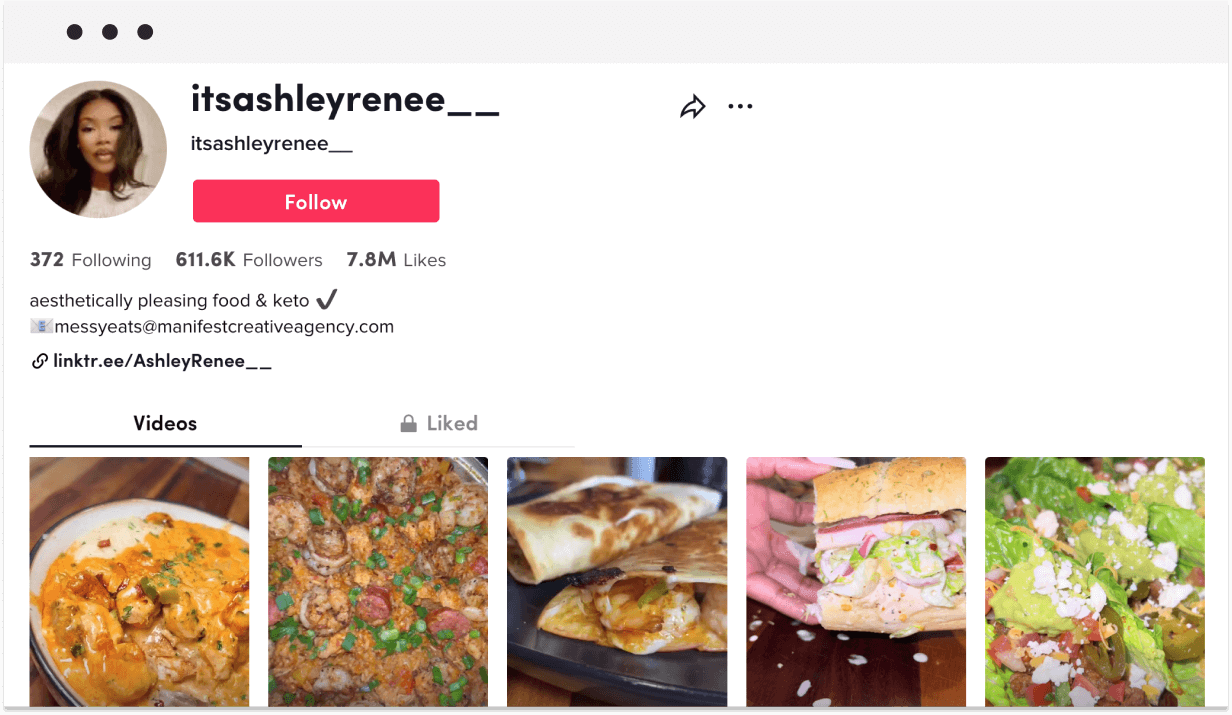
Ashley’s rapid rise on the platform mirrors Emma’s success:
I began studying trending songs and optimal posting frequencies. Now, I incorporate three key elements into nearly every video: a viral song, enticing food, and high-quality video production. It’s incredible how quickly my following grew.
2. Introducing your products through social media storytelling
Social media storytelling is a powerful tool for creating an emotional connection with your audience and effectively introducing your products.
By sharing behind-the-scenes content of your product creation process or workspace, you give your followers a glimpse into the inner workings of your brand. This transparency not only builds trust but also adds depth to your brand narrative.
One way to use social media storytelling is to take advantage of Instagram and Facebook Stories and Reels (on TikTok, you can make carousel posts or Stories).
These features provide a platform for sharing short, engaging content that disappears after 24 hours, which can create a sense of urgency.
Use Stories and Reels to showcase your products in action and highlight unique features. You can also use these formats to tell compelling stories about your brand, its values, and its mission.
Another compelling reason to engage in social media storytelling through Reels is that it signals to Instagram’s algorithm that you are active on the platform. This prompts the algorithm to promote your content to a broader audience.
Example:
Dan Mumm, a guitarist, often uses Instagram Stories and Facebook to share behind-the-scenes footage of his music production process, giving his audience a sneak peek into his creative journey.
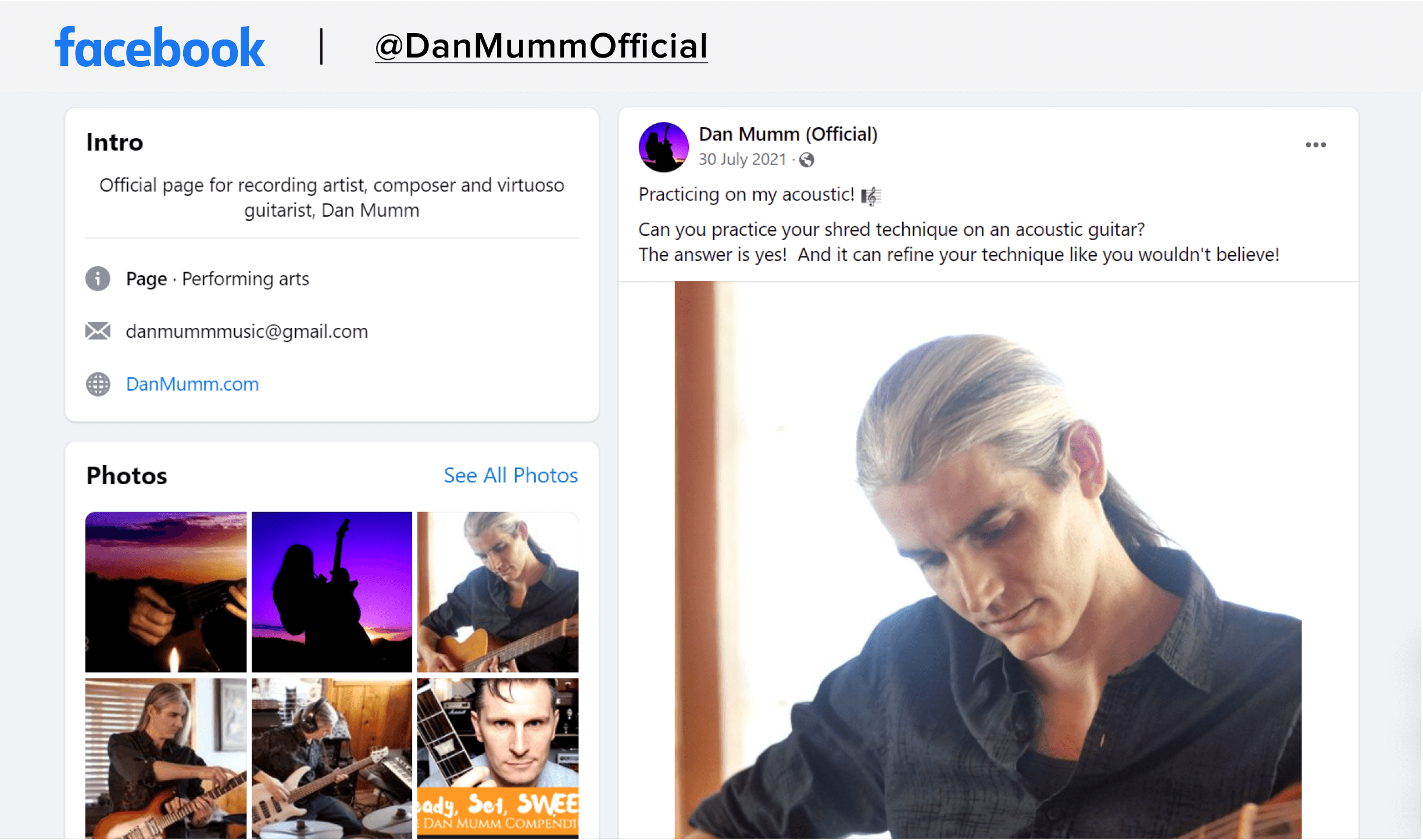
3. Engaging with your audience via interactive polls & live sessions
Engage your audience by hosting interactive product polls, quizzes, or Q&A sessions on platforms like Instagram or TikTok. This can give your audience valuable insights into your products or services.
By allowing your audience to actively participate, you not only foster a sense of community but also gather feedback and preferences directly from your target market.
Additionally, hosting live sessions on Instagram, TikTok, Facebook, or YouTube enables you to demonstrate product features in real-time, answer inquiries instantly, and address any concerns your audience may have.
For instance, you can ask:
- “Which product feature do you find most appealing?”
- “Would you buy this product from us? Yes or no.”
- “What challenges are you facing that our product/service can help solve?”
- “Which product would you like to see us develop next?”
- “What improvements would you like to see?”
- “What type of content do you enjoy most?”
- “What topics would you like us to cover in our next session?”
Example:
Justine, a digital nomad, launched her Lightroom Preset business in December 2018 after an Instagram poll showed strong interest from 3000 followers. Within minutes of opening her Sellfy store, she made her first sale. Justine engaged her audience by announcing the launch and offering discounts to poll participants on Instagram.
4. Collaborating with micro-influencers to increase credibility
Partnering with micro-influencers is a great way to boost your brand’s credibility and trustworthiness within your target audience.
We all know that micro-influencers, with their authentic connection to their followers, hold a significant sway over their audience’s purchasing decisions.
By aligning your brand with people whose values resonate with your own, you can use their credibility to enhance your brand’s perception among followers. Their endorsement serves as a powerful social proof that validates the quality and value of your products.
So, be sure to reach out to other creators or influencers. Ask them to share their honest experiences with your products or services, and provide them with the creative freedom to create authentic content.
For instance, you can offer them your products for free and gather their feedback. In many cases, they will appreciate your gesture and are likely to reciprocate the favor.
Example:
Music producer Jack Cronin (ProdbyJack) collaborated with micro-influencers in the music production community, leveraging their followers to promote his sound kits and beat packs.

5. Growing your business with giveaways & fun contests
Create excitement and engagement by giving out gift cards, and hosting giveaways or contests across your social media platforms (with a particular emphasis on offering freebies).
This strategy is effective because customers are often eager to share their positive experiences and purchases on social media when they receive a gift.
By offering giveaways or contests, you not only incentivize participation but also encourage customers to spread the word about your business.
As a Sellfy creator, you have the flexibility to include as many freebies as you desire and distribute them in various ways—whether it’s through social media, email campaigns, or website promotions.
This way, you create opportunities to showcase your products and attract new customers to your Sellfy store.
Examples:
Textile designer Linda Skuja (Eleven Handmade) saw a surge in followers and engagement by hosting a giveaway of her handmade products, encouraging participants to share and tag friends for a chance to win.
This is also one of the marketing tactics favored by Sellfy creator Nick Klimenko:
To cultivate trust and loyalty, we organize free giveaways on Facebook. This promotional approach yields excellent results.
Similarly, Sellfy creator Kaiwan Shaban generated a significant amount of traffic to his store by offering freebies:
I amassed around 100,000 email addresses through freebie giveaways. This strategy contributed to over 1.3 million visits to my Sellfy store, making it a highly effective marketing tactic.
Likewise, another Sellfy creator, Jack Cronin, has found success with this marketing tactic. He suggests offering freebies to easily expand your email list and grow your business:
Don’t hesitate to share free content! I’ve collected thousands of emails simply by providing freebies over the years. Later on, you can introduce paid products and generate sales.
6. Boosting product visibility with LinkedIn’s B2B marketing features
If your target audience includes businesses or professionals, using LinkedIn can be a great strategy for showcasing your products and expertise.
Unlike other social media platforms, LinkedIn is specifically designed for professional networking and B2B interactions, which makes it an ideal platform for reaching decision-makers and industry professionals.
When you establish a presence on LinkedIn, you can position yourself as a thought leader in your industry by sharing valuable insights, news, and expertise related to your product niche.
Posting regular updates, articles, or blog posts can help demonstrate your knowledge and authority, and effectively earn the trust and respect of your audience.
Plus, LinkedIn offers various features for B2B marketing, such as company pages and LinkedIn groups. Using these tools allows you to showcase your products to a highly targeted audience.
So, don’t overlook the potential of LinkedIn in your marketing strategy—it could be the key to unlocking new opportunities.
Example:
Software developer Nick Klimenko (LFO Store) shares valuable tips and tutorials on LinkedIn, positioning himself as an authority in his niche and attracting thousands of clients.
7. Creating educational YouTube content centered around your products
YouTube offers a powerful platform for creating informative and engaging content that can educate your audience about your products or services.
By producing high-quality tutorials or product demos, you have the chance to provide in-depth explanations, demonstrations, and practical examples of how your products can address specific needs or solve common problems.
In addition to educating existing customers, creating educational content can also attract new subscribers who may be searching for solutions or information related to your niche.
Moreover, educational content has the potential to drive traffic to your Sellfy store or website, as viewers who find your tutorials helpful may be more inclined to explore your offerings.
Examples:
Filmmaker Austin Newman shares in-depth tutorials on video editing techniques, attracting subscribers and driving traffic to his Sellfy store:
Anytime I have a new product, I’ll show it in a YouTube video. I wouldn’t just dump a product out there and tell people to figure it out—I have to show them how to use it. Showing your product in your content is important.
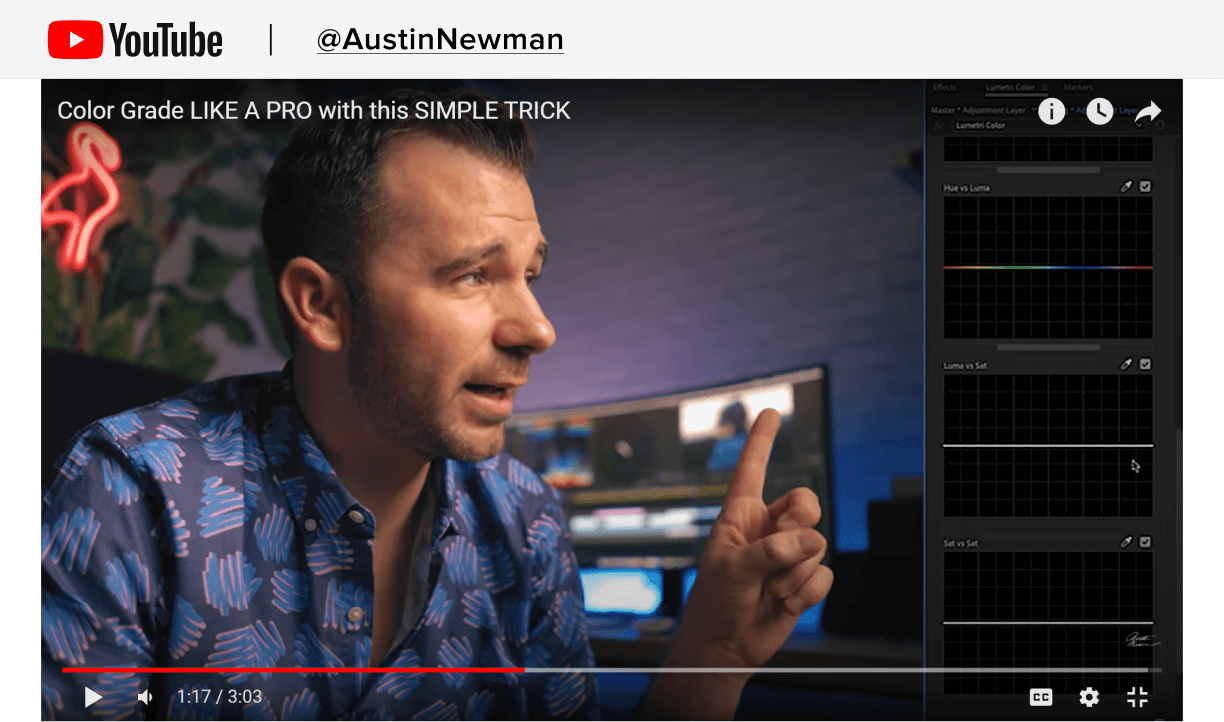
Photographer Kaiwan Shaban (K1 Production) swears by the same tactic:
I’ll make a video demonstration of how my product works. And, if people like it, they can click the link in the description and check out my Sellfy store.
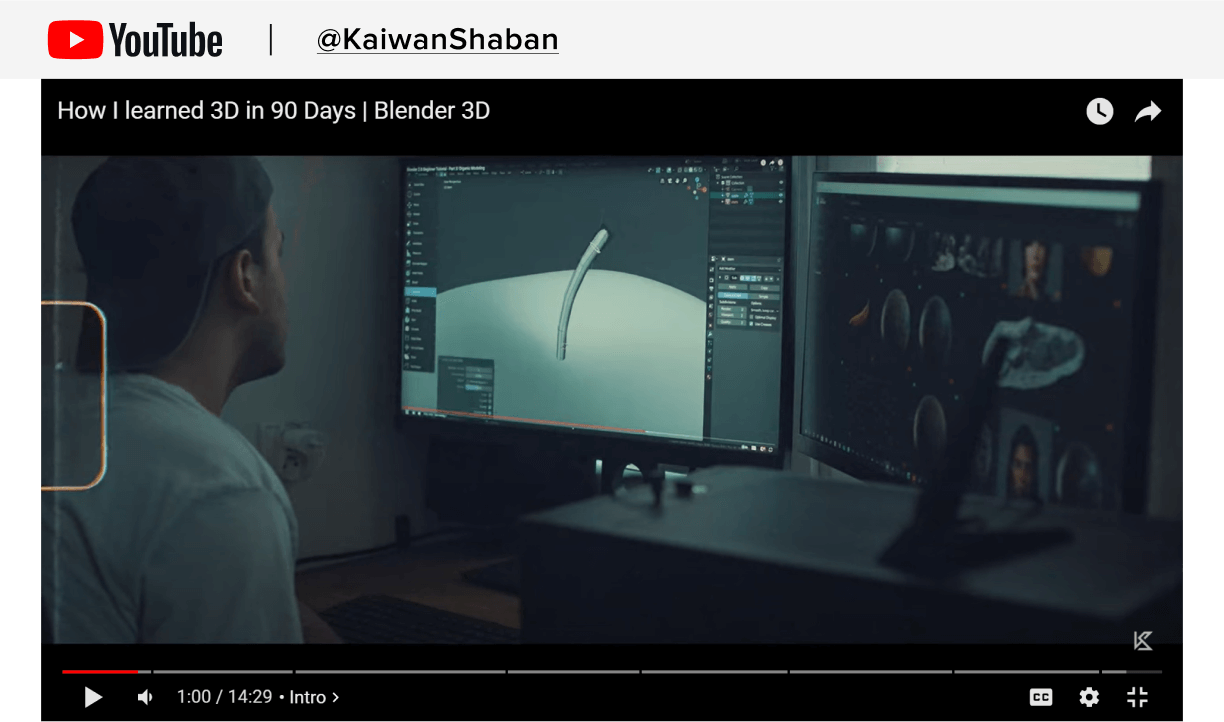
8. Conveying the value of your products with social proof
Another powerful strategy heavily used by successful Sellfy creators is word-of-mouth marketing.
Given that 90% of people typically place more trust in social proof than anything else, you should allow your family, friends, and loyal customers to lend you a hand and spread the word.
To do this effectively, it’s essential to enlist the support of your network by encouraging them to:
- Actively engage with your social media posts by liking, sharing, and leaving supportive comments;
- Save your product posts, particularly on platforms like Instagram where saving content can signal to the algorithm that your posts are valuable and worthy of promotion;
- Share their positive experiences with your products or services on their own social media profiles;
- Tag your brand in their posts or stories when showcasing your products or mentioning your services;
- Spread your discount codes with their own networks;
- Leave authentic testimonials and reviews about their experiences with your brand;
- Host referral programs.
Examples:
Star Wars fan and lightsaber sound font artist Kiennen Schade (KSith Saber Fonts) avoids using phrases like “best” or “most accurate” to persuade fans to purchase his product.
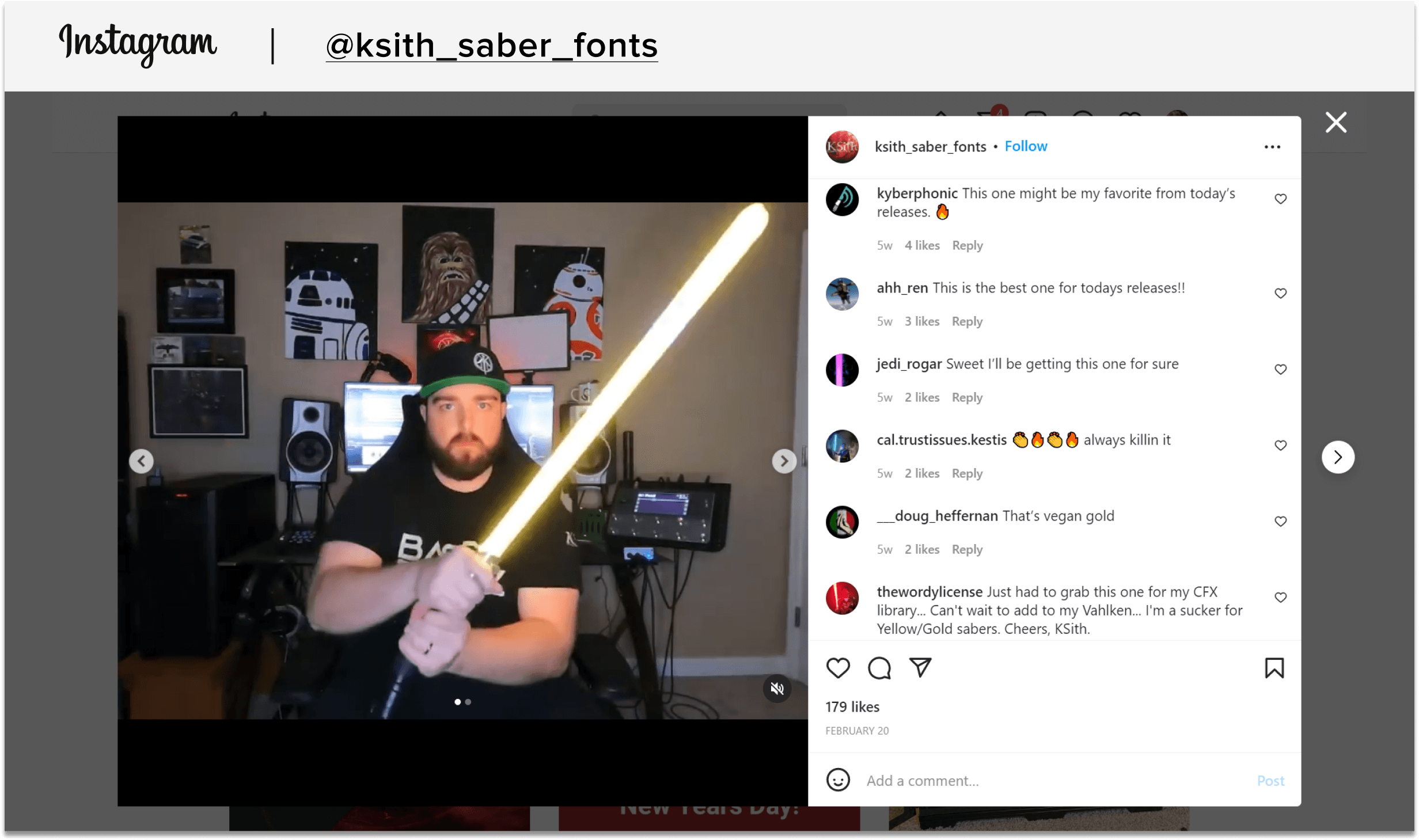
Instead, he relies on reviews to communicate the value of what he offers:
What’s driving traffic to my site is other people sharing my work—my loyal customers consistently spreading the word. Additionally, recommendations from people I collaborate with have contributed to building my customer base.
Another Sellfy creator, Jack Cronin (ProdbyJack), also depends on word-of-mouth. The natural expansion of Jack’s music production business has been remarkably successful, to the extent that he has never needed to invest in advertising.
According to him, this success is solely attributable to social proof.
Then there’s photographer Kaiwan Shaban who saw an increase in sales when he reposted testimonials on his social media channels, showcasing the real-life benefits of his products.
By implementing these practical strategies, you can effectively market your products on social media and grow your online business. Start experimenting with these tactics today to see what works best for your brand and audience.
Remember, social media marketing is an evolving field, so staying informed and adaptable is key to success.
Measure your success with Sellfy
Last but not least, tracking your results is crucial for understanding the effectiveness of your social media marketing efforts. Most platforms offer analytics tools that provide insights into your performance, including reach, engagement, and conversion rates.
For example, Sellfy provides a range of built-in analytics tools and features designed to give you insight into your store’s performance, including sales, traffic, and customer behavior.
With the help of Sellfy’s tools, you can use this data to track your sales trends over time, identify your best-selling products, and understand which marketing channels are driving the most sales.
FAQs: promoting your products on social media
How can I use social media to sell my product?
Use social media by targeting your audience with engaging content showcasing your product’s benefits. Use platforms like Instagram, YouTube, or TikTok for visual posts. Engage with users through interactive content and leverage influencers for wider reach. Include clear calls to action and make purchasing easy directly from your social media profiles (by adding your Sellfy store link to bio).
What are the best products to promote on social media?
The best products to promote are those that are visually appealing, solve a specific problem, evoke strong emotions, or cater to niche interests. This includes merch, digital products, physical items, and subscriptions. Ultimately, the effectiveness of a product on social media depends on its relevance to the target audience and its ability to engage and resonate with them visually and emotionally.
How do you promote a product?
You can promote your product by using Sellfy’s marketing tools: email campaigns, discount codes, SEO optimization, and more. You can also use Sellfy’s integrations with social media platforms to showcase your product, and take advantage of Sellfy’s analytics to track performance and optimize your marketing strategy for better sales outcomes.







